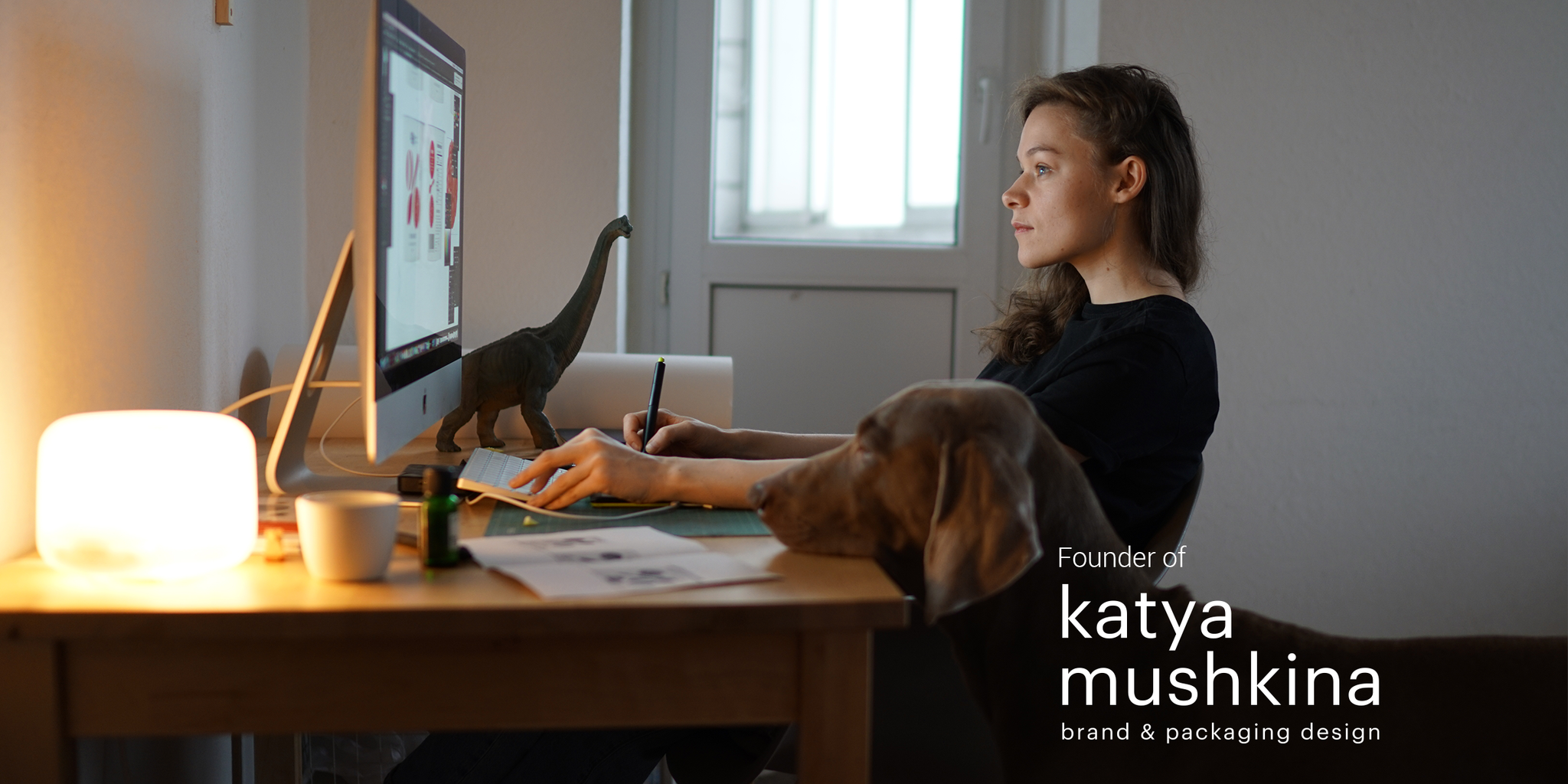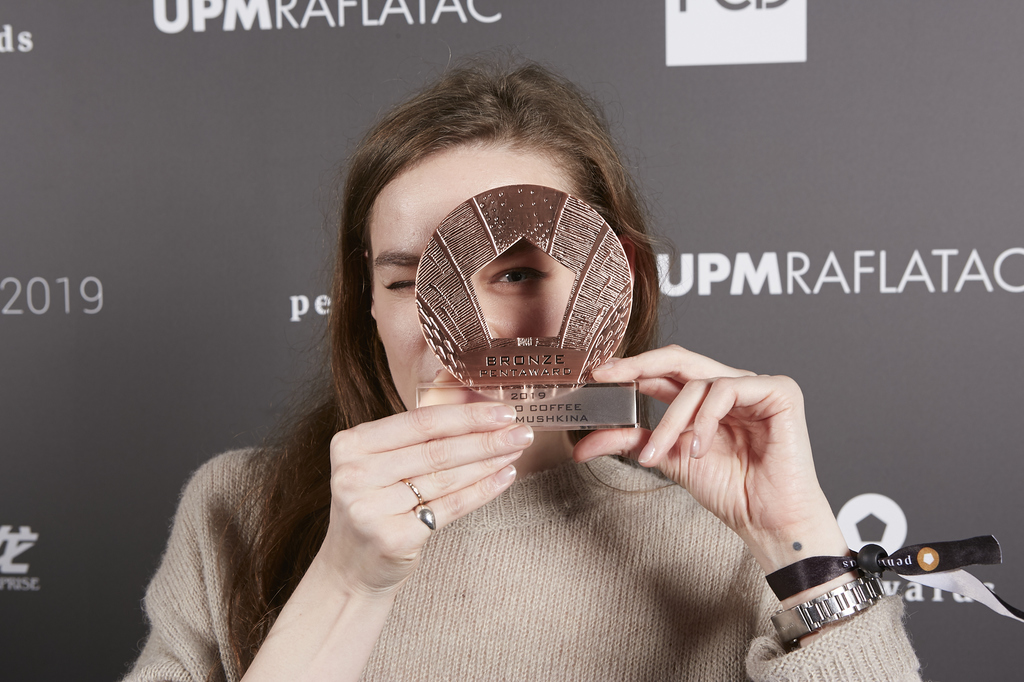
Back Behind the scenes with Katya Mushkina
After being a Pentawards winner four times, how has this changed your life from being a student to becoming an independent designer?
It is always a pleasure when the professional community grants you awards and recognition. This is a signal that you are doing something right, you are making a high-quality product that is interesting to people. I received my first Pentaward in 2015 and since then I grew up from a university student into an independent designer. When I was submitting my first application to participate in the contest, I could not even imagine that everything would change so dramatically. Yes, I wanted to present my concept, tell about it to the largest possible audience, and at that moment, I did not think at all about whether I would win or how many customers I would find.
When my project won the competition, I received several offers from the leading advertising and branding agencies in Russia: they noticed me and offered cooperation. After 2 years in Moscow agencies, I realized that I want to develop independently, and now I have been working as an independent designer for a year. Over this time, I met many interesting people from all over the world who, like me, want to drive the industry and implement vivid projects.
It doesn’t matter whether you win or not, even participating in international festivals makes you noticeable to both employers and potential clients. I remember my first gala ceremony when I saw industry leaders from around the world, their designs, and the level of their work. This was a very valuable experience, which helps and inspires to develop and create something completely new.

What is the most rewarding aspect of life in packaging design?
In any industry, DESIGN is one of the most interesting and important professions that affect the life of every person and our customers' businesses, be it environment design or packaging design for retail. There are hundreds of opportunities for self-realization and the implementation of cool ideas.
Designers are very versatile and open-minded people. The most valuable thing in our profession is that we can freely share our thoughts embodying them in our projects and helping businesses become more efficient. When you create a product and see how a layout from your computer is implemented in the product and people choose it, it's very cool!



When running a design business in Russia, what challenges are you faced with?
In general, business in Russia faces the same challenges as anywhere in the world. Due to limited budgets, companies cannot always afford to invest in graphic design. There are also a number of peculiarities about working with large customers: as a rule, these companies have a multi-stage approval system, which also causes difficulties. If we talk about specific Russian features, there are still not enough production capabilities here to print and manufacture packaging of non-standard forms and materials. This severely limits small and medium-sized manufacturers, who are forced to buy packaging from China. Such restrictions complicate the task for designers as well, but at the same time make the search for a solution even more interesting.
What inspires you? Who or what has had the greatest impact on your work?
Most of all I am inspired by people’s stories. This is the story of my husband, who went away from a successful IT career to work in video games, or the story of Usain Bolt, who pushes himself to the limit every time he runs a distance. Live performance of your favourite musical groups, modern choreography – if you fine-tune your perception, many things in life can inspire you. If we talk about designers, I am inspired by studios pursuing their own approach and aesthetics: they help me think about finding and shaping my own vision. Also, I never miss releases of such studio as Backbone Branding, Mousegraphics, Stranger & Stranger, Turnerduckworth, and I adore Asian designers, whose work with the form factor in packaging and industrial design amazes me.
What is your proudest project so far?
Each project I worked on is a new challenge with its own goals and a source of valuable experience. I believe my “best” case is still ahead. Of course, my first project, which also a winner of Pentawards, makes me feel very special about it.
At that time, I was still studying at the British Higher School of Art & Design, and our first task was to merge our hobbies and interests and suggest a bright concept. Thirty talented students studied with me, and to impress the curator was not an easy task. I had to come up with something really cool, something that no one had done before. Then I decided just to go with the flow: have ice cream and read a fascinating book about dinosaurs – poof! and the idea came about all by itself. The next day, I presented the group with a picture of a frozen dinosaur, and two years later, I finalized the idea with my friend – this is how we created Dino Ice, ice cream for children. This is frozen fruit ice in the shape of a dinosaur on a plastic stick. The project gained great popularity on the web: we received many emails from different countries offering cooperation, and we realized that we managed to “catch hold” of the audience.



What advice would you give someone who is at the begining of their career in packaging design?
Packaging design, like any other design, is a craft that you can learn if you make an effort. The main thing is sincere engagement in what you are doing. I think in order to become successful, it is important to set a high bar in the very beginning of your work, to compare your work with the designers that you like, with market leaders, who can teach you a lot. This will push you to move forward and improve the quality of your projects. The universal skill of any designer is to be curious and attentive to details; you never know what exactly can lead you to a good idea.





